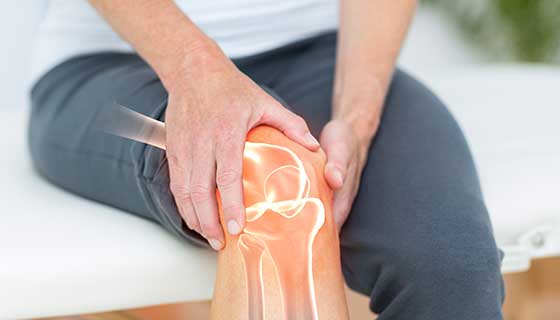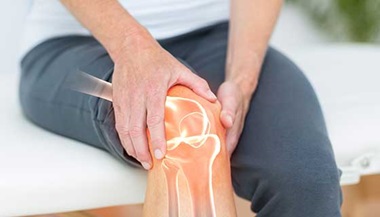Iliotibial Band Syndrome
What is iliotibial band syndrome?
Iliotibial band syndrome (often called “IT band syndrome”) is a medical condition that causes pain on the outside of the knee. It most commonly happens in athletes, especially distance runners, or those new to exercise.
The bones of your knee joint are your thighbone (femur), your shinbone (tibia), and your kneecap (patella). Your iliotibial band is a strong, thick band of tissue that runs down the outside of your thigh. It extends all the way from your hip bones to the top of your shinbone.
When you bend and extend your leg, this band moves over the outer lower edge of your thighbone. With repeated bending and extending of the knee, this movement of the iliotibial band may irritate surrounding tissues, causing pain.
Although anyone can develop it, iliotibial band syndrome is relatively common in distance runners.
IT Band Syndrome | Information from Johns Hopkins All Children's
What causes iliotibial band syndrome?
Researchers are still debating the exact cause of iliotibial band syndrome. The pain may result directly from friction as the iliotibial band moves over the lower outer edge of the thighbone. This may cause inflammation in the bone, tendons, and small, fluid-filled sacs in the area. The iliotibial band may also abnormally compress the tissue beneath it, causing pain.
Whatever the specific cause, it is clear that repetitive bending and extending of the knee is in some way responsible for iliotibial band syndrome.
Who is at risk for iliotibial band syndrome?
Iliotibial band syndrome happens most commonly in distance runners, but it may also happen from other sports, like cycling, skiing, rowing, or soccer.
If you are a runner, you might be more likely to develop iliotibial band syndrome if:
- You run on uneven or downhill terrain
- You run on worn-out shoes
- You run many miles per day
- Your legs slope a little inward from your knee to your ankle (bowlegged)
What are the symptoms of iliotibial band syndrome?
Iliotibial band syndrome causes pain on the outside of the knee. It might affect one or both of your knees. The pain is an aching, burning feeling that sometimes spreads up the thigh to the hip. You might notice this pain only when you exercise, especially while running. The pain tends to be worst immediately after you strike your foot, and it might only start up near the end of your workout. As the condition worsens, your pain might start earlier and continue even after you have stopped exercising. Activities that might worsen your pain include going up and down the stairs.
How is iliotibial band syndrome diagnosed?
Your healthcare provider will begin with a medical history, asking about your other medical problems as well as your current symptoms. You’ll receive a medical exam, including a thorough medical exam of your knee. This will include tests of your range of motion, strength, and areas of tenderness of your knee. Your healthcare provider will need to distinguish between iliotibial band syndrome and other possible cause of your knee pain, like osteoarthritis or a meniscal tear.
Usually, your healthcare provider will not need any additional tests to diagnose iliotibial band syndrome. If the diagnosis is unclear, you might need additional imaging tests, like an X-ray or magnetic resonance imaging (MRI) to rule out other possible causes.
How is iliotibial band syndrome treated?
Your healthcare provider might suggest several different treatment strategies to help relieve your symptoms. These might include:
- Avoiding activities that make your knee pain worse for a while (like running), and returning to these activities only gradually
- Icing the outside of your knee
- Taking over-the-counter pain medicines
- Getting corticosteroid injections to decrease inflammation
- Making modifications to your activity, like lowering your bicycle seat for cycling or improving your running form
- Practicing special exercises to stretch and strengthen the muscles around your hip and your knee
You may find it helpful to work with a physical therapist as well.
These modifications help most people with iliotibial band syndrome. Your healthcare provider might recommend surgery if you still have significant symptoms after 6 months of trying these other therapies. Several different surgical choices exist, including one that removes the part of the iliotibial band that moves over the femur. You can discuss all of your surgical choices with your healthcare provider.
Can iliotibial band syndrome be prevented?
In some cases, iliotibial band syndrome is preventable. To help prevent a flare-up of iliotibial band syndrome, you can take the following precautions:
- Run on even surfaces
- Replace your running shoes regularly
- Ease up on your training
- If you run on a track, make sure you run in both directions
- Have an expert check your stance for running and other sporting activities
- Stretch your outer thigh and hamstrings regularly
If you are new to exercise, start slowly and gradually increase your activity.
Ask your healthcare provider or trainer if he or she has additional recommendations.
When should I call my healthcare provider?
If your symptoms do not start to improve after several weeks of treatment, plan to see your healthcare provider soon. You may have a different kind of problem with your knee.
Key points about iliotibial band syndrome
Iliotibial band syndrome is a medical condition that results in pain on the outside of your knee. It usually only happens in athletes, especially distance runners, but anyone can get it. It results from movement of the iliotibial band, which runs down the outside of the thigh:
- Using improper sporting equipment and having a poor running stance may increase your chance of getting iliotibial band syndrome.
- Your healthcare provider will probably be able to diagnose you with a simple medical history and physical exam.
- Most people respond to conservative treatment, like pain medicines, ice, stretching and strengthening exercises, and avoiding the aggravating activity for a while.
- In rare instances, some people need surgery to treat their iliotibial band syndrome.
- Taking simple precautions can help prevent many cases of iliotibial band syndrome.
Next steps
Tips to help you get the most from a visit to your healthcare provider:
- Know the reason for your visit and what you want to happen.
- Before your visit, write down questions you want answered.
- Bring someone with you to help you ask questions and remember what your provider tells you.
- At the visit, write down the name of a new diagnosis, and any new medicines, treatments, or tests. Also write down any new instructions your provider gives you.
- Know why a new medicine or treatment is prescribed, and how it will help you. Also know what the side effects are.
- Ask if your condition can be treated in other ways.
- Know why a test or procedure is recommended and what the results could mean.
- Know what to expect if you do not take the medicine or have the test or procedure.
- If you have a follow-up appointment, write down the date, time, and purpose for that visit.
- Know how you can contact your provider if you have questions.







